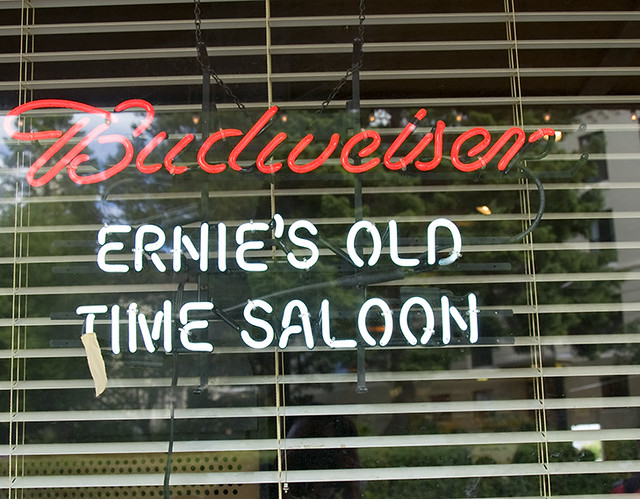Really, A-B InBev?
Ernie’s Old Time Saloon, Sitka, Alaska…
Budweiser… brand has sought approval for new labels that replace the Budweiser name with “America,” according to a filing with the Alcohol and Tobacco Tax and Trade Bureau. The labels don’t stop there. They include phrases such as “E Pluribus Unum” and “from the redwood forest to the Gulf stream waters this land was made for you and me,” as well as “indivisible since 1776.”
A-B InBev on Tuesday, May 10, confirmed the limited-edition label change, saying “America” would replace “Budweiser” on the front of 12-oz. cans and bottles. The packaging will run from May 23 through election season in November, the brewer stated. The agency that handled the design change is Jones Knowles Ritchie, New York. The packaging will be accompanied by a summer-long campaign called “America is in Your Hands.” A national TV spot featuring the cans and bottles will premiere on June 1.
(click here to continue reading A-B InBev Looks to Replace Budweiser With ‘America’ on Packs | CMO Strategy – AdAge.)
Honestly, this makes me laugh more than anything I’ve read recently. Maybe I’m not the target demographic, no, not maybe, definitively. Even when I was a young, beer swilling college student without much money, I still didn’t drink Budweiser. Mind you, this was back in the dark ages before the craft beer explosion – which meant if a bunch of us went on a camping trip, or had a party, we’d scrounge together enough money to purchase Shiner Bock, or if we couldn’t swing that, we would buy a case of Carling Black Label, or Stroh’s, or Lone Star, something like that, or frequently, wine. I honestly cannot think of a single time when I had a choice of beverage that I chose Bud. Maybe at some low rent sporting event?
And also, Budweiser is made in massive factories, probably by robots, and is owned by Anheuser-Busch InBev SA/NV, a conglomerate headquartered in Leuven, Belgium. You know, MURICA! Whoo hoo!
Anheuser-Busch InBev SA/NV makes beers such as:
Budweiser, Corona and Stella Artois, international brands Beck’s, Hoegaarden and Leffe and local brands such as Bud Light, Skol, Brahma, Antarctica, Quilmes, Victoria, Modelo Especial, Michelob Ultra, Harbin, Sedrin, Klinskoye, Sibirskaya Korona, Chernigivske and Jupiler.
(click here to continue reading Anheuser-Busch InBev – Wikipedia, the free encyclopedia.)
and have annual revenues in the neighborhood of $50,000,000,000. So obviously, somebody drinks that swill. A lot of people apparently. But I wonder what percentage of their gross revenue goes to pay American taxes? I’m guessing they are in Belgium instead of St. Louis because the tax climate is friendlier there.
If you are a Bud drinker, you aren’t really drinking it for its flavor, I’m assuming. Especially in light of:
After the November 18, 2008 InBev takeover, several cost-cutting measures were implemented that negatively affected the flavor of the beer. Whole rice grains were been replaced by broken ones, and the high quality Hallertauer Mittelfrüh hop was phased out. A former top AB InBev executive told BusinessWeek Magazine, in an article published on November 8, 2012, that the company had saved approximately $55 million a year by substituting cheaper hops in Budweiser and other U.S. beers
(click here to continue reading Budweiser – Wikipedia, the free encyclopedia.)
Anyway, I’m sure summer sales will be brisk, lots of ironic purchases of six packs that will sit in refrigerators around the nation, collecting dust…




























